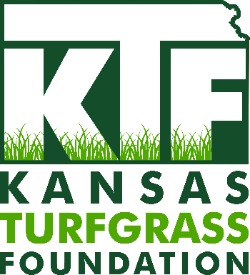Irrigating
- General Lawn Watering Information
- Lawn Watering Benefits and Considerations
- Recommendations for Effective Lawn Watering
- Additional Lawn Management Practices Related to Water Conservation
- Management Practices for Unwatered Lawns
Water is essential for supporting plant life. It is the carrier in which dissolved minerals enter and move about in plants. Water is also necessary for photosynthesis, the chemical conversion of sunlight into carbohydrates, to occur. Plant and environmental cooling also occurs as a result of water release through leaves as vapor. Finally, water has a structural role in maintaining plant turgidity or rigidity; herbaceous plants undergoing water deficit often become limp. Although there are differences among various grasses and plants in their water demands, most lawns and landscape plants normally grown in the north central region will benefit from irrigation that supplements natural precipitation, especially during prolonged heat and drought.
General Lawn Watering Information
In the north central region, there are two ways to manage your lawn regarding summer irrigation. One is to water your lawn on an as-needed basis. In this method, your lawn is watered throughout the growing season when natural precipitation is inadequate to support active growth and maintain green color.
Pest problems or poor culture aside, the presence of an adequate quantity of water during summer is the environmental factor that determines whether a lawn is green and growing or brown and dormant. Thus, supplemental irrigation is essential during many summers to maintain green, actively growing lawns.
Cool season lawn grasses—bluegrasses, ryegrasses, fescues, and bentgrasses—require approximately 1 to 1 1/2 inches of water per week during the growing season to maintain green and active growth. Even when they are watered, however, the growth of cool season lawn grasses slows during summer’s hot, dry weather because environmental conditions are not within the optimum range for turfgrass growth.
An alternative method of managing lawn irrigation is to allow the lawn to go dormant during hot, dry weather. Unwatered lawns of cool season species normally become dormant and brown during hot, dry periods and then recover acceptably when growing conditions improve in the late summer or early autumn. During most years, lawns in the north central region can safely survive periods without summer irrigation.
Lawn Watering Benefits and Considerations
There are several benefits derived from lawn irrigation, as well as some considerations about this practice. When lawns and landscape are properly watered, appearance is maintained and pride of ownership enhanced. In addition, proper irrigation often decreases weed invasion and allows lawn grasses to better tolerate insect and disease pressure. On the other hand, improper irrigation practices—either too much or too little water—can lead to poor lawn grass health and increased weed, insect, and disease problems. Excessive watering can cause rapid turf growth resulting in more mowing and clippings. It can also lead to a shallow turf root system and weed and pest invasions. Under watered turf becomes open and sparse, developing a poor appearance and allowing weed invasion. Additionally, for some individuals, the financial and environmental costs of season-long irrigation can be substantial in areas where high-quality water is in short supply. The choice to irrigate home lawns should be made after weighing the specific facts in your locale.
Recommendations for Effective Lawn Watering
The following practices are recommended to achieve effective lawn watering.
- Do not begin watering at the first sign of warm weather. Root-system elongation is the initial turfgrass response to droughty conditions. Do not delay watering, however, until the lawn has gone dormant. After an initial droughty period, begin watering to maintain green color and active growth.
- To determine when to water, walk on your lawn to see if your footprints are visible behind you. On lawns in need of water, the grasses will not spring back following trafficking. Where moisture is adequate, grasses will spring back. Another method to determine the need for watering is to watch for grass color changes. Very often, as soils dry, lawns with inadequate moisture develop a dark blue or purple cast. Finally, you can use a soil sampling tool to examine soil for the presence of moisture.
- Select a sprinkler based on yard size and shape. Many sprinklers have water distribution patterns that can be adjusted to fit a variety of sizes and shapes. It is not necessary to have an in-ground sprinkler system to have an attractive yard, although an in-ground system can reduce the labor of moving a sprinkler and hose from spot to spot.
- Supply a uniform amount of water to the entire lawn. Do not supply excessive water in some spots and inadequate amounts in others. When sprinkling, monitor water distribution by placing coffee cans or some other straight-sided vessels at various points beneath the sprinkler’s pattern. Measure the quantity of water captured in each container and overlap sprinkler patterns to supply the entire lawn with a uniform quantity of water.
- It is best to water deeply and infrequently. Water to the depth of the turf root system, that is, supply enough water in one irrigation to moisten the entire soil profile where roots are growing. Usually, 1 inch of water is adequate to supply this amount. Do not water again until this soil area has dried, and then water the entire soil-root zone again. This entails monitoring soil conditions with a trowel or soil sampling probe. Coarse, sandy soils require more frequent watering than fine-textured clay soils. During hot, dry, windy, and sunny conditions lawns will also require more frequent irrigation, as will exposed, open areas, or turf that is excessively fertilized with nitrogen.
- Avoid light, frequent irrigation unless you have just seeded an area. Light frequent irrigation encourages shallow turfgrasses rooting and annual weed invasion.
- Watch newly planted lawns, both seeded and sodded, closely. Young grass plants and newly installed sod have smaller root systems than their fully established counterparts. These plants will usually require frequent irrigation until their root systems have developed and they have become established.
- Do not apply water faster than the soil can absorb it. Do not create puddles by overwatering. On slopes, apply water slowly enough to be absorbed into the soil and not run off the surface.
- Water early in the day. This can reduce water loss due to evaporation and also reduce the incidence of several lawn diseases.
- Do not follow an irrigation regime that causes your lawn to bounce between active growth and dormancy. Each time your lawn resumes growth after dormancy, stored plant reserves are depleted. A continuous pattern of dormancy followed by active growth can stress turf and may slow its recovery when improved weather conditions return.
Additional Lawn Management Practices Related to Water Conservation
The following practices are recommended to reduce the water requirements of a lawn.
- Do not mow turf too short. During spring and autumn in the north central region, maintain most lawns at 2 to 2 1/2 inches. Raise this height by 1/2 inch during the summer and any time the lawn is stressed by pests or environmental conditions. Mow frequently and never remove more than one-third of the grass blade at any one mowing.
- Do not supply excessive nitrogen fertilizers during hot, dry spells. Nitrogen can encourage the lawn grasses to grow excessively during periods when environmental conditions are not conducive to lush growth. These conditions can lead to disease problems, excessive water use, and excessive mowing. Be sure to fertilize in late summer or early autumn. This fertilization allows cool-season grasses to recover from summer stresses and go into winter in good shape.
- Limit lawn traffic during hot, dry periods.
- Maintain a soil pH of six to seven.
- Core aerify cool season lawns in spring or autumn to relieve soil compaction and improve soil aeration and water movement. Proper core aerifying usually improves root growth and overall lawn health.
- Maintain thatch levels at 1/2 inch or less. Excessive thatch reduces your lawn’s ability to tolerate droughty conditions.
- Do not use pesticides—herbicides, insecticides, and fungicides—as a substitute for proper lawn care. Apply these products only when proper management practices fail to produce a satisfactory lawn. Always read, understand, and follow the manufacturer’s label directions when using any pest-control product.
Management Practices for Unwatered Lawns
The following practices are recommended in order to achieve the best possible appearance for unwatered lawns.
- Grow drought-tolerant grasses. Common types of Kentucky bluegrass, the tall fescues, the fine-leaf fescues, zoysiagrass, and buffalograss are the most naturally drought-tolerant grasses for the north central region.
- During periods of extreme heat and prolonged drought, apply 1/4 to 1/2 inch water every 2 to 4 weeks to unwatered lawns. This will maintain moisture in stems and roots so the grasses can survive to regrow when conditions improve.
- Follow recommendations outlined in the section above, "Additional Lawn Management Practices Related to Water Conservation."
Lawns represent a sizable investment in both time and monetary expenditures. A properly managed lawn is a source of pride and, as part of a quality landscape, can increase your home’s value and improve its physical environment. Whether it is watered or allowed to go dormant, lawns should be treated as an important portion of the landscape that deserves consideration.



